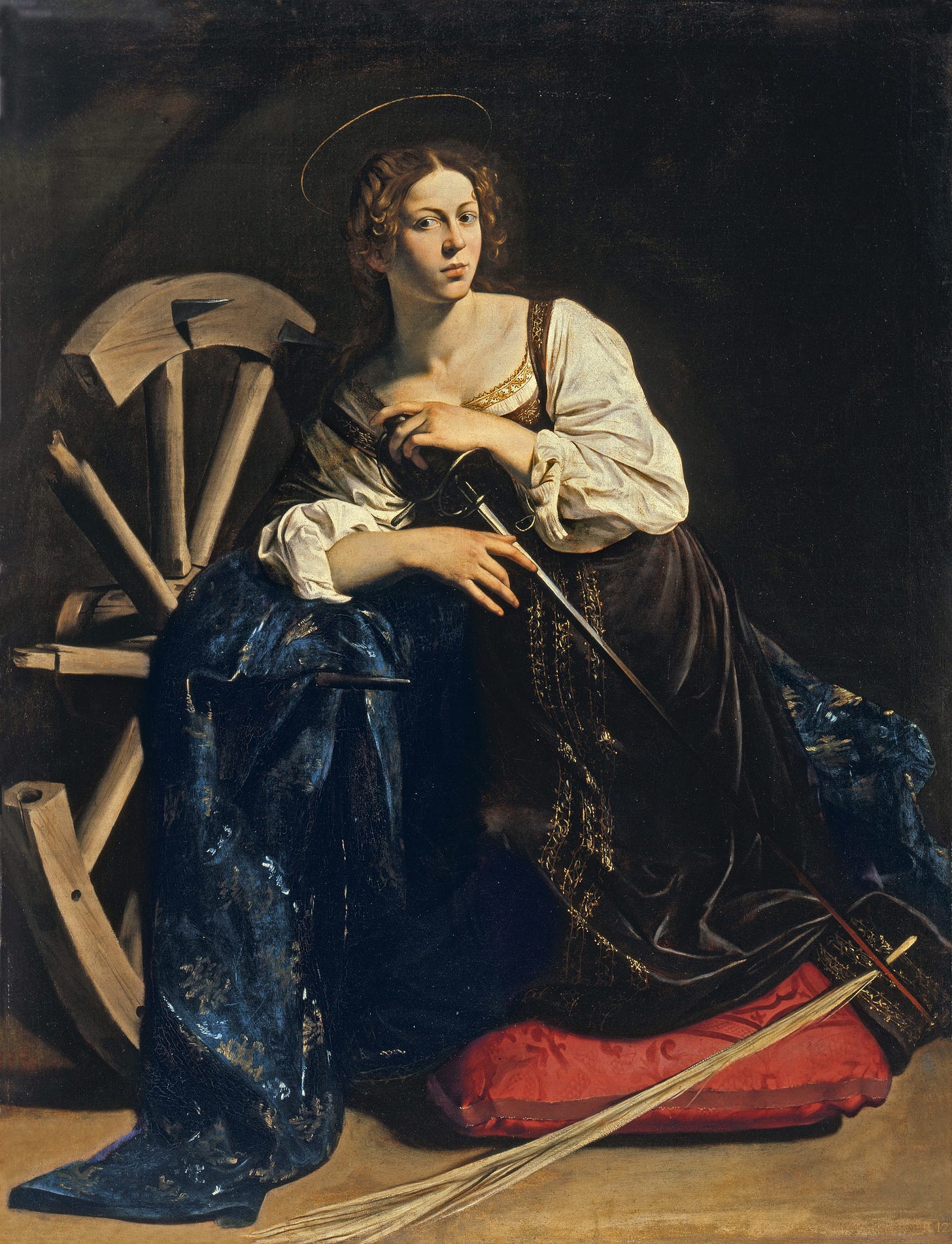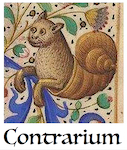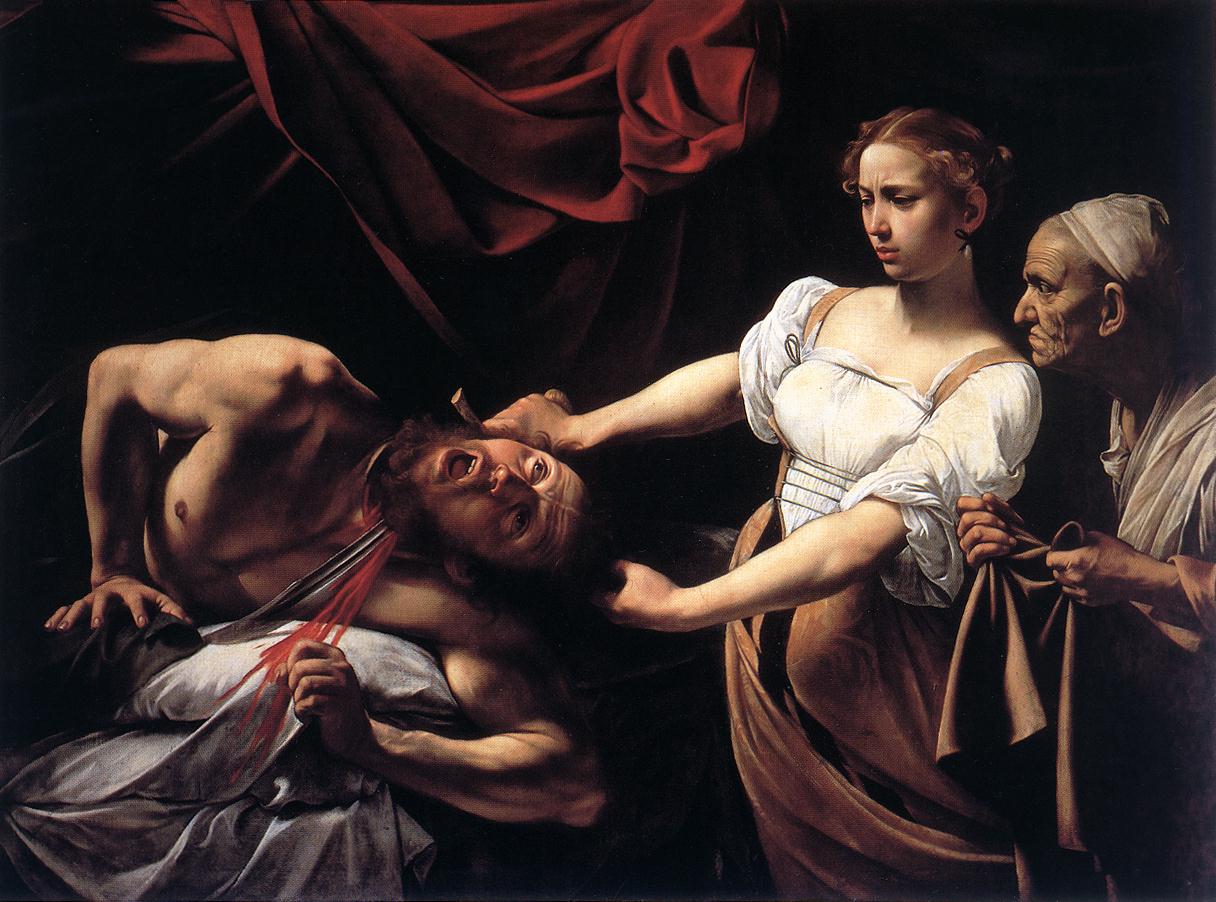An investigation into Caravaggio’s earnings
And now for something completely different. According to historical records, the painter Michelangelo Merisi da Caravaggio signed a contract in 1600 to create two paintings (which ended up being “The conversion of Saint Paul” and “The martyrdom of Saint Peter”) during a period of eight months, for 400 scudi — even though in the end it took him more than a year to finish them, the first versions were rejected, and his final compensation was reduced to 300 scudi.
It is also reported that he sold one of his earlier paintings, “The Fortune Teller” (1594), for just 8 scudi, as he was apparently broke at the time.
So far, so good. But how much was a scudo?
The answer is not as easy as it seems to find out. A Roman scudo was the highest value coin in the Papal States of Rome at the time. It was subdivided into 100 baiocchi, which was further divided into 5 quattrini (incidentally, in some regions of Italy they still say “quattrini” when they mean money or coins in general).
A scudo came in the form of a gold or silver coin. The gold coins had a weight of 3.35 grams of gold 22K. Let’s say that Caravaggio had been paid in gold coins. Calculating with current gold prices (55 euros per gram at 22K), we would have 184 euros per scudo, so 300 scudi would mean a total of 55,275 euros today.
But would that be an adequate way of measuring its real value at the time?
No, not really. The price of gold and what it can buy can fluctuate quite a lot, so it is better to analyse it in terms of cost of living and what you could buy with a scudo in Rome in 1600.
Now, in the 1600s, Italy wasn’t a unified republic as it is now, and each region had its own monetary system. While Rome used the scudo/baiocco/quattrini, other regions of Italy used the lira, which was subdivided into 20 soldi and then each soldi into 12 denari — `again, “soldi” and “denaro” are also general terms for “money” in Italy). But converting from one system to another is quite complicated, as their value could change from region to region or from year to year.
In Florence, in the early 1500s, Leonardo da Vinci is known to have been paid 200 florins for a painting. The florin in Florence was more less the equivalent of a scudo in Rome, that is, a gold coin of about 3 to 4 grams. (Technically, Caravaggio would be placed more in the “Baroque” period than in the Renaissance, as that had peaked a 100 years earlier and mostly around Florence, but here for simplicity I’m calling both of them “Renaissance painters”.)
Anyway — because of the conversion difficulties, let us focus just in Rome.
Cost of living in the 1600s
What was the cost of living in Rome in 1600? According to a paper by Richard E. Spear, living in the Eternal City was not cheap back then (it still isn’t today). Just rent would set you down between 12 scudi a year in the poorest neighbourhoods to up to a 100 scudi in the really posh ones. The painter Artemisia Gentileschi and her family is known to have rented two of the rooms in their house to lodgers for 18 scudi a year. In 1619, painter Guido Reni received an allowance of 50 scudi a year to pay for his rent (on top of a monthly salary of 9 scudi).
What about food? Also according to Spear, a merchant would spend about 70 scudi a year on food. A dozen eggs would cost 1 baiocco (0.01 scudi), a litre of wine 3 baiocchi (0.03 scudi) and a kilogram of bread, between 4 to 5 baiocchi. Pasta was considered a luxury good and could cost you thrice as much, 12 to 15 baiocchi. Fish was also very expensive in Rome, at 24 baiocchi a kg, while you could get beef and lamb for 9 baiocchi a kg. A pair of shoes cost 50 baiocchi, or half a scudo.
And what were average salaries like? Again according to Spear, “during 1605-7, a field worker made between 15 and 22 baiocchi a day, or about 50 scudi a year; a muratore, or skilled mason, earned 35 baiocchi a day in 1624, that is, about 85 scudi annually.” On average, an ordinary worker would spend about three quarters of his income in food, and a third of that just on bread.
On the other hand, a wealthy merchant could make as much as 40,000 to 50,000 scudi in a year, and a cardinal could get an ecclesiastical income between 10,000 and 20,000 scudi. A few made even more. Cardinal Scipiano Borghese, of the famous Borghese family, made 405 scudi a month as “superintendent of the ecclesiastical state”, and in 1612 he earned an astonishing 140,000 scudi in just a year.
Let’s say that Caravaggio’s average contract was for a duration of 8-10 months, so rounding up, with 300 scudi for that period he was making about 1 scudo a day. However, he might have have multiple commissions at the time. Considering that Caravaggio is known to have been paid a total 4,400 scudi in the last ten years of his life for 17 paintings, but he is known to have painted at lest 40 works during that time, if we average 250 scudi per commission (4,400 / 17), Spear calculates Caravaggio’s yearly income at 1,000 scudi.
However, we have to deduce from that all his other expenses — paying his assistants and models, buying painting materials, which could be quite expensive, and were not included in the payment.
Nevertheless, with just one scudo you could buy 20 kg of bread, or two pairs of shoes, or a barrel of 40 litres of wine, or 4 kg of fish.
Considering today’s cost of bread in Italy is about 3 euro/kg, 20 kg of bread costs 60 euro. Therefore we could say — very approximately — that Caravaggio was receiving the equivalent of today’s 60 euro a day, 1,800 euros a month, or a total of 18,000 euros for the 300 scudi during 10 months. However, if we calculate his yearly income as 1,000 scudi a year, as Spear does, then we have an income of 60,000 euros a year, or 165 euros a day, which is more, but not much more than what an average worker makes in today’s Rome (43,000 euro/year).
But considering that at the time there were lots of people living in extreme poverty in Rome, and than an average worker would not make more than 60 or 70 scudi a year, 1,000 a year was a very respectable sum.
It doesn’t seem like a lot now — considering that today a single painting by Caravaggio is worth 40 millions of euros — but back then, with 1,000 scudi you could live quite comfortably for a year and even afford servants (as some painters did, and relatively few people could afford servants in Rome back then).
Caravaggio was not average
Caravaggio was paid more than other artists, since he was even back then famous and requested. On the other hand, he was also infamous for his bohemian lifestyle, and probably spent a lot of his money in gambling, booze and prostitutes (*). He was also constantly involved in brawls and duels and was arrested and sued a few times, so a lot of money probably went into that too.
And life can change a lot in a few years. In 1594, Caravaggio was poor and selling a major painting for just 8 scudi. In 1601, he was the most sought after painter in Rome, earning lots of commissions. But just five years later, in 1606, he was accused of the murder of a wealthy young man, Rannuccio Tomassoni, and had to flee Rome in disgrace with a bounty on his head.
After that he lived in exile in Naples, Sicily and Malta, but got involved in fights there and made new enemies, so he had to flee Malta too. He died in relative poverty at only 38 years of age in the beautiful peninsula of Porto Ercole, Tuscany, and the causes of his death are still unclear. Some say syphilis, some say malaria, some say sepsis from a wound in yet another fight, and some say he was murdered by assassins sent by the Tomassoni family.
(1) Much is made in the current discourse of Caravaggio being homosexual, but that seems to be based exclusively on the fact that he liked to paint beautiful young boys, which is not much evidence of anything. His known affairs were all with women. He is known to have had a relationship with the prostitute Fillide Melandroni, who posed for several of his paintings, and also a certain “Lena” is listed as his companion — this is likely Maddalena Antognetti, who posed for him as Saint Catherine of Alexandria.





